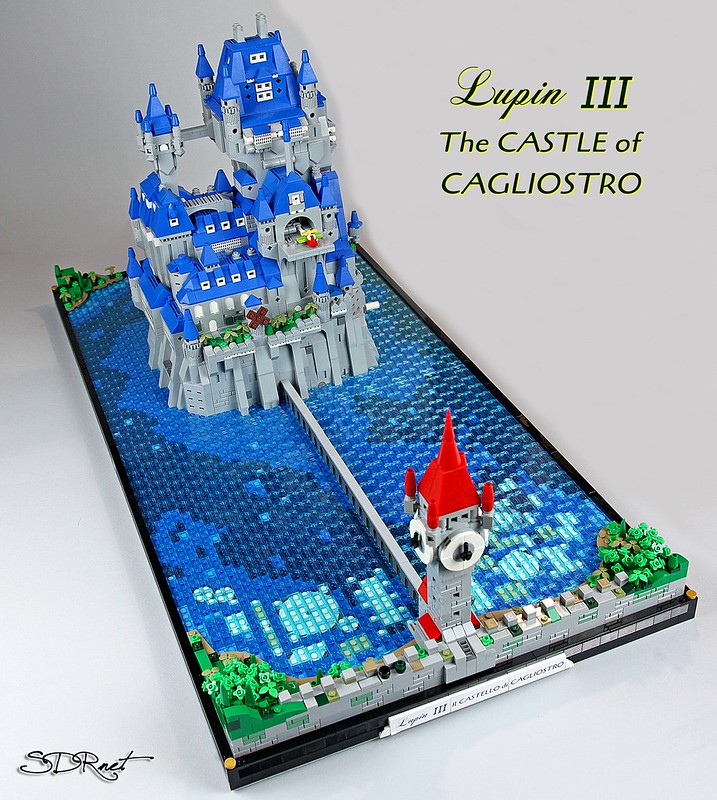Lupin III: The Castle of Cagliostro is a Studio Ghibli film which is often overlooked, so it’s great to see this fantastic build of the main structure in the film by Sandro Damiano. Created in microscale, the castle rests upon a beautifully formed lake with different shades of colour placed underneath transparent blue tiles, representing the variety of depths in the water. A long walkway links the castle to a clock tower which is placed upon a crumbling wall. The castle has been lovingly built with accurate tall blue spires and roofing details. Headlight pieces are heavily featured across the castle, portraying large windows.
Round the back you can really get a sense of how the castle is built upon a rocky surface with the use of dark grey bricks. There are also some clever uses of parts, such as the ends of grille pieces as tiny windows, and some of the arches are represented by rounded plates with bar handles. It’s a fantastic build that really captures the sense of awe and mystery surrounding the castle.


I wonder what that crank does.
From Damiano’s own description:
“I invented a mechanism that moves the following things:
1) the windmill on the front
2) the motorized aircraft that the Count uses to enter the Castle or Lupin to escape
3) an intermittent light that turns on in the rear entrance of the castle
4) the tilting corridor that connects the castle to the prison tower
5) the hands of the clock tower
All these functions are connected to each other and therefore with a single lever they are operated simultaneously!”
I love this movie and this build, but it is most definitely not a Studio Ghibli film.
It is from 1979, 6 years before Studio Ghibli was founded.
This amazing movie was directed, and co-written, by the legendary filmmaker Hayao Miyazaki, which is why it is sometimes mistaken as a Ghibli film.